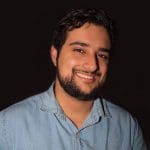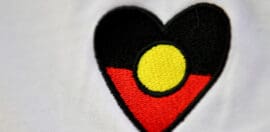‘Our communities are the experts’: The new partnership moving services into the Aboriginal community-controlled sector

20 September 2021 at 5:14 pm
One of Australia’s largest providers of out-of-home care services is teaming up with the peak body for Aboriginal and Torres Strait Islander children
Life Without Barriers has pledged to transfer its out-of-home care (OOHC) services for Aboriginal and Torres Strait Islander children to Indigenous community-controlled organisations within the next decade, amid a push to reduce the over-representation of First Nations children in care.
The community service provider is working with Indigenous peak body SNAICC – National Voice for our Children – to support the handover of services to the community-controlled sector, which advocates hope will set a precedent for future service delivery.
This will put the care and case management for Indigenous children in the hands of Indigenous-led organisations, to ensure these kids have access to culturally-safe services and can maintain a strong connection to culture.
While Indigenous children make up 5.9 per cent of Australia’s child population, more than four in 10 (41 per cent) children in OOHC are Aboriginal and Torres Strait Islander.
A 2020 Australian Institute of Health and Welfare (AIHW) report found the rate of Indigenous kids in OOHC living with Aboriginal and Torres Strait Islander carers had fallen over the previous two years, from 47.9 per cent to 43.4 per cent.
Claire Robbs, the CEO of Life Without Barriers (LWB), said the organisation was keen to address the over-representation of First Nations children in the child protection system.
“As we observe the distressing rates of Aboriginal children entering care, our organisation and board are clear that we must make this commitment to children and their families if we are ever to realise giant steps towards reconciliation,” Robbs said.
“We are grateful to our partnership with SNAICC and First Nations peoples to understand the most effective way we [can] strengthen families to stay together with their children.”
The new National Closing the Gap Agreement aims to reduce the over-representation of Aboriginal and Torres Strait Islander children in OOHC by 45 per cent by 2031.
A recent Productivity Commission report said this target was not on track to be met.
SNAICC CEO Catherine Liddle said it was clear that the key to reducing this over-representation was transitioning services to the Indigenous community-controlled sector.
“The future of decision-making about the safety and wellbeing of Aboriginal and Torres Strait Islander children is community-controlled,” Liddle said.
“Our communities are the experts. We know that culturally-appropriate services designed, led and delivered by [Indigenous-led organisations], get better outcomes.”
Liddle told Pro Bono News that LWB recognised the importance of this transition and realised it needed to change how it did business.
She said by moving away from OOHC for Indigenous children, LWB was helping ensure more funding went to community-controlled organisations.
“There is an incredible opportunity to look at what it will actually take to start moving services into the Aboriginal community-controlled sector,” she said.
“Because it’s a big piece of work and it requires new infrastructure, it requires an increasing workforce, and it requires changing the way we’re used to seeing business done.”
Liddle said the transition would help increase the re-homing of Aboriginal and Torres Strait Islander children, while also cutting down child removals and Indigenous people’s contact with the justice system.
She urged other organisations in this space to follow LWB’s lead.
“We believe it’s absolutely possible to reach that [Closing the Gap] target if the transition to Aboriginal community-controlled services starts and this is a massive step in starting that,” she said.
“We’re hoping it sets an example where other providers also start looking at their service delivery models and saying, ‘okay, what can we do right now to change this trajectory?’
“We need to be looking at how we can keep our families better connected, better resourced, and with the tools to remain strong.”







